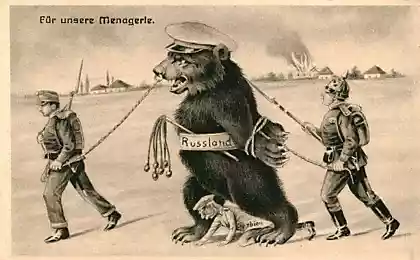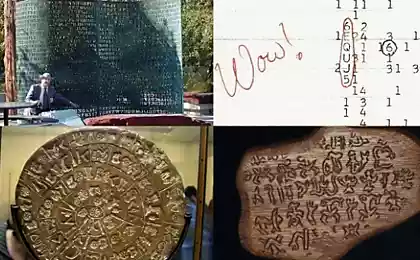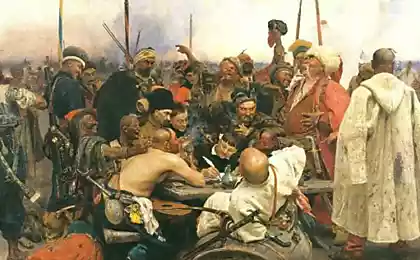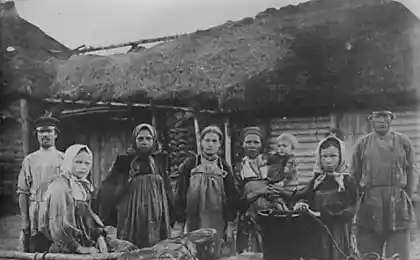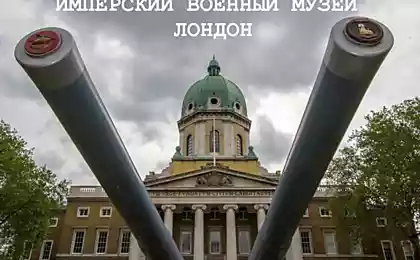922
20 major mysteries of world history
History is fraught with a lot of puzzles. Will there ever answer questions from our list - is unknown. So far, despite the myriad of trials and billions of dollars in budgets, no one is and failed. < Website publishes a compilation of the major mysteries of history.
1. Was Atlantis? H3> Atlantis - the most famous of the legendary ancient continents of the world. About Plato wrote it in detail. It was mentioned in the writings of Herodotus, Diodorus of Sicily, Posidonius, Strabo and cursed. According to Plato, the island was on the west of the Pillars of Hercules, in front of the mountains Atlanta. During a strong earthquake in one day, he went under the water. It happened at about 9500 BC. e.
2. Was the Flood? H3> Flood is mentioned not only in the canonical books of the Bible, but in the later apocrypha. For example, in the Book of Enoch. Meets the story of the flood in the other books in the Jewish Haggadah and the Midrash Tanchuma, as well as in the Sumerian myth of Ziusudra. The first extant Sumerian poem about the flood back to the XVIII century BC.
3. Who built the pyramids? H3> How to re-enactors and modern scientists have struggled with no solution to the riddle of building the pyramids, compelling versions of their method of construction has not yet been found. Some experts say that the pyramids were built from ready-made blocks, hewn in the rock, the other (Joseph Davilovits) say that the blocks have already been made on the construction site from a mixture of stone powder and "geopolymer concrete" based on limestone. Incredible the complexity of the process calls into question all hypotheses. It remains an open question as to who built the pyramids, slaves or civilian employees, and how many there were.
4. Where did the Maya? H3> Mayan civilization was one of the most developed, but at the time of the arrival of the Conquistadors from the Maya were only isolated forest tribes, underdeveloped and do not pose a serious force. They lived in huts and built magnificent temples to palaces. Where did the Maya? The mystery is still not solved. Versions set by the epidemic and the war to alien intervention, but none of them are proven.
5. Who were the Sumerians? H3> About Sumerians international community learned only in the middle of the XIX century, when scientists proved that there was a state in Mesopotamia, whose age reaches 6000 years. It was from him Babylon and Assyria inherited their culture.
6. Whether the Vikings opened America? H3> Norman version of the discovery of America voiced more often, but still is the official version of kolumbovskaya. They are both interested in what both times America was discovered by mistake (Scandinavian merchant named Bjarni Heryulfsson off course because of the storm, and Columbus sailed to India).
7. Who were the Hyksos? H3> These are called "kings, shepherds." It was during their rule in Egypt, there was a two-wheeled chariots, change the tactics of warfare. Little is known about them. The Hyksos - nomadic tribes, "wold rulers" who invaded Egypt around 1700. Don. e. They ruled it for over 100 years, and even founded a whole dynasty of Hyksos kings. Expelled the Hyksos from Egypt were only the founder of the XVIII dynasty Ahmose I in. 1587 BC. e. The question of who exactly were the Hyksos, where they came from and where it disappeared remains open.
8. Why did Neanderthals become extinct? H3> The Human Genome and Neanderthal identical to about 99, 5%, but it does not mean that we are descended from Neanderthals. With apes have similarities genome 98%.
9. Where did the Scythians? H3> It is believed that the Scythians became the first state to have disappeared as a result of the Great Migration. The Scythians were at war with the Sarmatians, Philip and Alexander the Great, with the Goths and the Huns. It is believed that after the defeat of the last large part of the Scythians died, many also became part of the Army of the winners. In the history of this great confusion about the definition of late Scythians. Some historians reckon the descendants of the Scythians Chechens and Ossetians.
10. Why did Alexander the Great died? H3> We still do not know where Alexander the Great is buried. This significantly reduces the chance to find out the main mystery - why he died in the prime of life, in 32 years. The Persians, which he mercilessly crushed, claimed that the commander to punish the sky behind the desecration of the grave of King Cyrus. Returning home Macedonians said that the great commander died of drunkenness and debauchery (sources brought us information about his 360 concubines). Roman historians believed that he was poisoned by some slow-acting poison Asian. In the most common version, Alexander died of malaria. It does not explain why it caused such a "single blow».
11. There Is King Arthur? H3> King Arthur's practically all we know from childhood. Arthurian cycle has been a bestseller in the Middle Ages and in modern times has become one of the cult phenomena of mass culture. Some critics argue that the entire literature of fantasy genre came just from the "Matter of Britain." However, the accuracy of Arthur's existence as a separate historical identity has not yet been proved. Perhaps the real prototype Arthur wore a different name, or is a collective image of several prototypes.
12. Why plague "decimated" Europe? H3> In the history of European pandemic plague, which literally "decimated" Europe in the Middle Ages, a lot of unknown. So, wild rodents, areas which have also extended as far north could not be established. There is no answer to the question of why the pandemic is the "black death" hit Europe in the same sequence and the same territories, and in the same time as the first pandemic - the plague of Justinian (531-589)? How does it flared pockets simultaneously in very extensive areas of Europe, such as the plague in Moscow and London in the middle of the XVII century?
13. Where did the gold of the royal family? H3> At the beginning of the First World War, the Russian Empire had the world's largest gold reserves, estimated at 1 billion 695 million rubles (1311 tons of gold, more than 60 billion dollars at the exchange rate of the 2000s).
14. Where did the gold Templar? H3> Great treasures of the Templars are still legendary. According to historian Lozinsky, chief treasurer of the Order was the chief treasurer of France, and the largest debtor of the Order was King Philip IV the Fair of France.
15. Where are the 10 tribes of Israel? H3> At the end of the VIII century BC entirely disappeared five-sixths of the Jews - 10 of 12 etnosoobrazuyuschih birth. They are already looking for 2,500 years, and are sometimes in the most unexpected places - from India to Europe. On his relationship with the lost tribes claim even in Japan. There is a religious movement McHugh, whose representatives claim that the imperial title himself "Mikado" comes from the Hebrew of gadol (great). None of the versions of today is not official.
16. Who built Stonehenge? H3> The mystery of Stonehenge megalithic complex is not solved yet. According to one version, it was built by Druids, on the other - the Celts, on the third - the ancient Britons, in the fourth - Merlin himself. There are those who argue that Stonehenge - a hoax, and was built in modern times.
17. How to build monuments on Easter Island? H3> Among the researchers the most widespread theory that the moai on Easter Island settlers erected from the Polynesian islands in the XI century. How did they do it - is still unknown. Thor Heyerdahl experiments succeed only partially. His mode of transportation was not fit for the multimeter colossi weighing 50 tons or more. Norwegian scientist has also failed to explain how to MAOI hats worn up to two tons.
18. Where was the "cradle" of Indo-Europeans? H3> This question is still open. Previously it was thought that the "cradle" of Indo-Europeans was in India, but it denies the linguistic analysis. As a rule, in the region of origin of any language family there are many different languages and dialects of the same family, and in India there is only one branch of the Indo-Aryan languages. In Central and Eastern Europe, by contrast, there are hundreds of species of Indo-European languages.
19. What caused the Great Migration in Europe? H3> The Great Migration destroyed the ancient world, is built on its ruins the Middle Ages. Although many versions, is still not clear what was the main cause of movements of the barbarians. As usually happens in such cases, the scientists say about the sum of the factors. Firstly, over-population in the Nordic countries, and secondly, the change of climatic conditions (cold weather and humidity), and finally, a shift of social strata - which came to power tribal elite was interested in profit. The best goal was the Roman Empire.
20. Who sponsored the Bolsheviks? H3> The question of whether, on whose money has been carried out the revolution in Russia is still debatable. For a long time the main was the version that the first role in the financing of playing German General Staff, but today more and more historians are inclined to believe that the support was also from England, and from Wall Street, and even by the Old Believers, who had close business contacts with British industrialists.
1. Was Atlantis? H3> Atlantis - the most famous of the legendary ancient continents of the world. About Plato wrote it in detail. It was mentioned in the writings of Herodotus, Diodorus of Sicily, Posidonius, Strabo and cursed. According to Plato, the island was on the west of the Pillars of Hercules, in front of the mountains Atlanta. During a strong earthquake in one day, he went under the water. It happened at about 9500 BC. e.
Atlantis searched all over the world, from Gibraltar to Peru and Brazil, but to date there is no evidence-based theory of its location.
2. Was the Flood? H3> Flood is mentioned not only in the canonical books of the Bible, but in the later apocrypha. For example, in the Book of Enoch. Meets the story of the flood in the other books in the Jewish Haggadah and the Midrash Tanchuma, as well as in the Sumerian myth of Ziusudra. The first extant Sumerian poem about the flood back to the XVIII century BC.
References to trensgressiyah sea there in the myths of all cultures, but was actually a flood? Historians still can not give a definite answer. However it is known, for example, that about 5600 BC. e. in the Mediterranean was a real deluge when, due to the level of the Black Sea earthquake rose to 140 meters, it has increased to 1, 5 times, appeared the Sea of Azov. Perhaps, for the inhabitants of those places that was the "Flood».
3. Who built the pyramids? H3> How to re-enactors and modern scientists have struggled with no solution to the riddle of building the pyramids, compelling versions of their method of construction has not yet been found. Some experts say that the pyramids were built from ready-made blocks, hewn in the rock, the other (Joseph Davilovits) say that the blocks have already been made on the construction site from a mixture of stone powder and "geopolymer concrete" based on limestone. Incredible the complexity of the process calls into question all hypotheses. It remains an open question as to who built the pyramids, slaves or civilian employees, and how many there were.
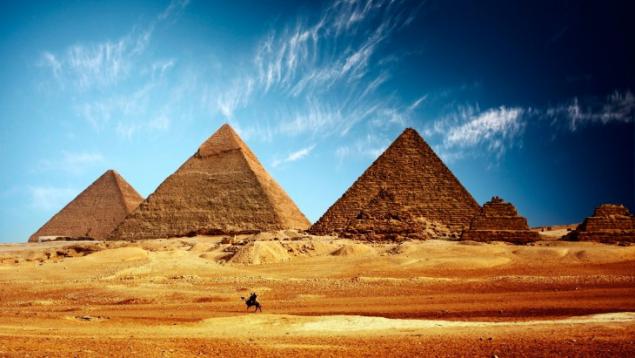
4. Where did the Maya? H3> Mayan civilization was one of the most developed, but at the time of the arrival of the Conquistadors from the Maya were only isolated forest tribes, underdeveloped and do not pose a serious force. They lived in huts and built magnificent temples to palaces. Where did the Maya? The mystery is still not solved. Versions set by the epidemic and the war to alien intervention, but none of them are proven.
5. Who were the Sumerians? H3> About Sumerians international community learned only in the middle of the XIX century, when scientists proved that there was a state in Mesopotamia, whose age reaches 6000 years. It was from him Babylon and Assyria inherited their culture.
It is still unknown where the Sumerians came into Mesopotamia. It is assumed that it was a mountainous region, as in the language of the Sumerians the words "country" and "Mountain" are spelled the same. Also, it had to be the area with the developed technology - the Sumerians were pioneers in many fields of knowledge, from astronomy to physics. Presumably, but not yet proven, it could be the south of India.
6. Whether the Vikings opened America? H3> Norman version of the discovery of America voiced more often, but still is the official version of kolumbovskaya. They are both interested in what both times America was discovered by mistake (Scandinavian merchant named Bjarni Heryulfsson off course because of the storm, and Columbus sailed to India).
Materials for the Norman version is much smaller than kolumbovskoy, and not all of them are considered genuine, which greatly undermines her trust.
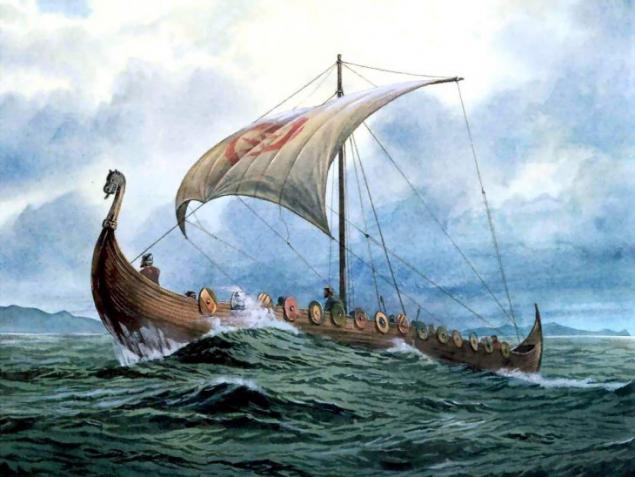
7. Who were the Hyksos? H3> These are called "kings, shepherds." It was during their rule in Egypt, there was a two-wheeled chariots, change the tactics of warfare. Little is known about them. The Hyksos - nomadic tribes, "wold rulers" who invaded Egypt around 1700. Don. e. They ruled it for over 100 years, and even founded a whole dynasty of Hyksos kings. Expelled the Hyksos from Egypt were only the founder of the XVIII dynasty Ahmose I in. 1587 BC. e. The question of who exactly were the Hyksos, where they came from and where it disappeared remains open.
8. Why did Neanderthals become extinct? H3> The Human Genome and Neanderthal identical to about 99, 5%, but it does not mean that we are descended from Neanderthals. With apes have similarities genome 98%.
Contrary to popular belief that the Neanderthals were half-wild, they are not. It was a well-developed branch of evolution, they even knew how to make musical instruments. Versions of their disappearance are as follows: 1) assimilation; 2) Cro-Magnon genocide; 3) Ice Age that they failed because they did not know how to produce clothing as superfluous.
None of these versions is not yet institutionalized science.
9. Where did the Scythians? H3> It is believed that the Scythians became the first state to have disappeared as a result of the Great Migration. The Scythians were at war with the Sarmatians, Philip and Alexander the Great, with the Goths and the Huns. It is believed that after the defeat of the last large part of the Scythians died, many also became part of the Army of the winners. In the history of this great confusion about the definition of late Scythians. Some historians reckon the descendants of the Scythians Chechens and Ossetians.
10. Why did Alexander the Great died? H3> We still do not know where Alexander the Great is buried. This significantly reduces the chance to find out the main mystery - why he died in the prime of life, in 32 years. The Persians, which he mercilessly crushed, claimed that the commander to punish the sky behind the desecration of the grave of King Cyrus. Returning home Macedonians said that the great commander died of drunkenness and debauchery (sources brought us information about his 360 concubines). Roman historians believed that he was poisoned by some slow-acting poison Asian. In the most common version, Alexander died of malaria. It does not explain why it caused such a "single blow».
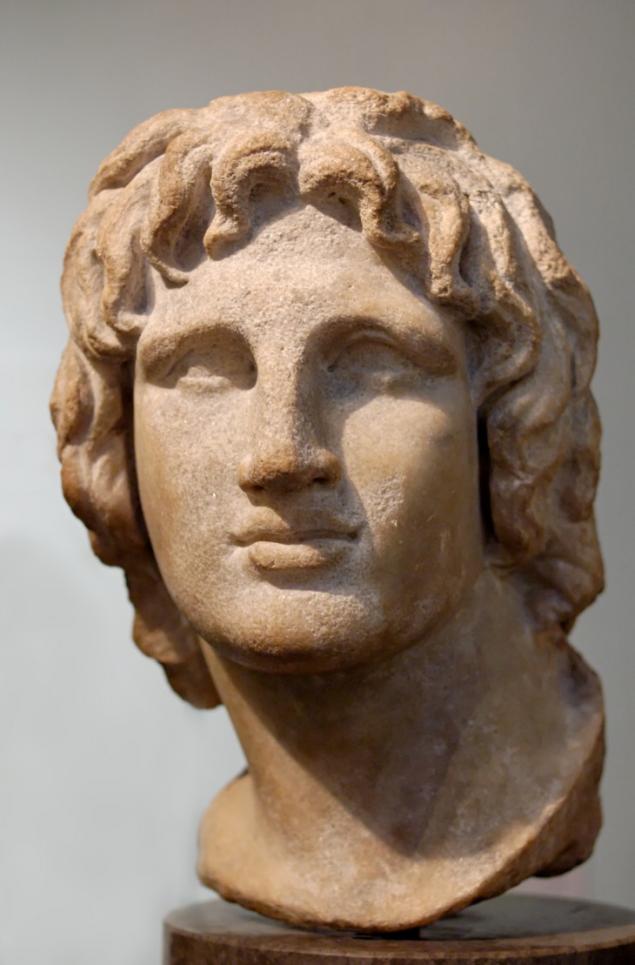
11. There Is King Arthur? H3> King Arthur's practically all we know from childhood. Arthurian cycle has been a bestseller in the Middle Ages and in modern times has become one of the cult phenomena of mass culture. Some critics argue that the entire literature of fantasy genre came just from the "Matter of Britain." However, the accuracy of Arthur's existence as a separate historical identity has not yet been proved. Perhaps the real prototype Arthur wore a different name, or is a collective image of several prototypes.
12. Why plague "decimated" Europe? H3> In the history of European pandemic plague, which literally "decimated" Europe in the Middle Ages, a lot of unknown. So, wild rodents, areas which have also extended as far north could not be established. There is no answer to the question of why the pandemic is the "black death" hit Europe in the same sequence and the same territories, and in the same time as the first pandemic - the plague of Justinian (531-589)? How does it flared pockets simultaneously in very extensive areas of Europe, such as the plague in Moscow and London in the middle of the XVII century?
13. Where did the gold of the royal family? H3> At the beginning of the First World War, the Russian Empire had the world's largest gold reserves, estimated at 1 billion 695 million rubles (1311 tons of gold, more than 60 billion dollars at the exchange rate of the 2000s).
The fate of most of the gold reserves of the tsarist Russia is still unknown ("Kolchak's gold"). It was about 490 tons of pure gold bars and coins valued at 650 million. According to one version, he stole the Czechoslovak Corps, on the other - it was hidden on the orders of Kolchak, on the third - funds have settled in European banks.
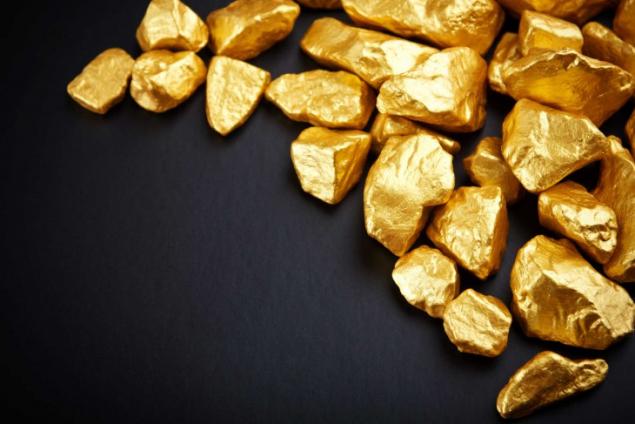
14. Where did the gold Templar? H3> Great treasures of the Templars are still legendary. According to historian Lozinsky, chief treasurer of the Order was the chief treasurer of France, and the largest debtor of the Order was King Philip IV the Fair of France.
After the trial of the Knights Templar, he discovered that the jewels and gold in the treasuries was not so much. Where did the gold Templar - a mystery. It is known that part of the accumulated treasures of the Templars escaped transported by ship, but where - is not known. According to legend, the Templars turned gold in Nova Scotia (Nova Scotia) - the territory of modern Canada. It is believed that part of it was transferred to the Canadian Island Oak (Oak Island), where the descendants of the Knights Templar hid it in a hiding place with numerous traps.
15. Where are the 10 tribes of Israel? H3> At the end of the VIII century BC entirely disappeared five-sixths of the Jews - 10 of 12 etnosoobrazuyuschih birth. They are already looking for 2,500 years, and are sometimes in the most unexpected places - from India to Europe. On his relationship with the lost tribes claim even in Japan. There is a religious movement McHugh, whose representatives claim that the imperial title himself "Mikado" comes from the Hebrew of gadol (great). None of the versions of today is not official.
16. Who built Stonehenge? H3> The mystery of Stonehenge megalithic complex is not solved yet. According to one version, it was built by Druids, on the other - the Celts, on the third - the ancient Britons, in the fourth - Merlin himself. There are those who argue that Stonehenge - a hoax, and was built in modern times.
It is also unknown, and how it is built Stonehenge. During the renovation of the complex, which began in 1901 and ended only in the 1964th, stones rearranged with a crane, but in the Middle Ages there was no such equipment.

17. How to build monuments on Easter Island? H3> Among the researchers the most widespread theory that the moai on Easter Island settlers erected from the Polynesian islands in the XI century. How did they do it - is still unknown. Thor Heyerdahl experiments succeed only partially. His mode of transportation was not fit for the multimeter colossi weighing 50 tons or more. Norwegian scientist has also failed to explain how to MAOI hats worn up to two tons.
18. Where was the "cradle" of Indo-Europeans? H3> This question is still open. Previously it was thought that the "cradle" of Indo-Europeans was in India, but it denies the linguistic analysis. As a rule, in the region of origin of any language family there are many different languages and dialects of the same family, and in India there is only one branch of the Indo-Aryan languages. In Central and Eastern Europe, by contrast, there are hundreds of species of Indo-European languages.
The most reliable, though not proven, is the version that the ancestral home of the Indo-Europeans were the Volga and Black Sea land where archaeologists recorded yamna culture.
19. What caused the Great Migration in Europe? H3> The Great Migration destroyed the ancient world, is built on its ruins the Middle Ages. Although many versions, is still not clear what was the main cause of movements of the barbarians. As usually happens in such cases, the scientists say about the sum of the factors. Firstly, over-population in the Nordic countries, and secondly, the change of climatic conditions (cold weather and humidity), and finally, a shift of social strata - which came to power tribal elite was interested in profit. The best goal was the Roman Empire.
20. Who sponsored the Bolsheviks? H3> The question of whether, on whose money has been carried out the revolution in Russia is still debatable. For a long time the main was the version that the first role in the financing of playing German General Staff, but today more and more historians are inclined to believe that the support was also from England, and from Wall Street, and even by the Old Believers, who had close business contacts with British industrialists.
via russian7.ru/2015/11/20-glavnykh-zagadok-mirovoy-istorii/
What will happen with the hair when walking in the winter without a hat: an interview with trichologist
Meet the man who did not wash 60 years!








